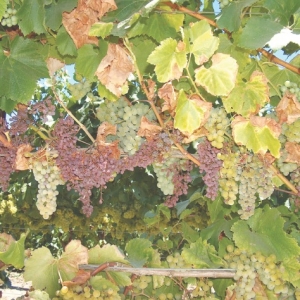It achieved critical mass quickly and has been well produced, marketed and positioned in world markets as a premium product. Currently Sauvignon Blanc is our flagship variety, without question. As long as there is consistent demand by consumers, then New Zealand Sauvignon Blanc will remain this country’s number one exported wine. However when you see the quality and diversity of wines produced from Hawke’s Bay, Martinborough, Waipara and Central Otago, I believe that in the future New Zealand will have many flagship varieties based on the diversity of the regions.
This positioning can be seen in the old world wine regions such as France, a country with various flagship varieties based on region and key varieties that perform constantly at a premium level. For the New Zealand wine industry to achieve this we need a consistent simple story from each key region. Hawke’s Bay - Syrah and Merlot/Cabernet blends, Martinborough Pinot Noir, Waipara Riesling and Central Otago Pinot Noir.
Our diversity needs to be celebrated and recognised with a consistent message from the regions promoting their variety and style to determine its premium positioning and each region’s value proposition.
Other varieties will flow on but a key strength and leadership position is required to deliver a unique product with a simple, clear message so that New Zealand wine is known and renowned for the greatness that exists throughout the various.
Are there pests and disease threats that need to be prepared for?
Without question. Pierces disease could be devastating if the disease and vector make it to New Zealand. The glassy-winged sharp shooter has been found in the South Pacific so a vigilant approach to border management will be essential for protecting our vine inventory for the future. Vine mealy bug is also a potential threat, a prolific multiplier with up to 6 generations produced per season. This pest is spreading leaf roll virus type three at rampant speed in various wine producing regions of the world. Hopefully this mealy bug species does not enter New Zealand. A strong research and development presence is essential for protecting, maintaining and enhancing our vineyards for the long term productivity and sustainability of our wine industry.
Will climate change the face of the industry?
Climate change will provide conditions for new pests and diseases and will challenge the way in which we manage current problems such as botrytis, powdery mildew, downy mildew and mealy bug. The key will be to keep science evolving and developing to combat these changing conditions. With resilient growers and a strong science research focus with NZW, the industry is in a good space to stay ahead of such challenges. The strategy required to deal with these issues will be to develop practical based research programmes that offer growers direct techniques, products and management tools on how to manage such issues when they arise. It is essential that NZW continues to work closely with growers to find new ways and techniques of managing pests and diseases using innovative and sustainable techniques.
With Marlborough nearly all planted, what other areas are likely to come to the fore?
I think in time we will see a gradual move to planting slopes and hillsides on a more commercial scale than we currently do. At the moment we are very focused on developing vineyards on flat to undulating land, based on the equipment we currently have available. There are numerous well documented benefits of growing wine grapes on hillsides, such as frost protection, moderated temperatures and improved wine quality. Right across all the wine growing regions, there are a number of such sites available. The key for these developments will be determining how to mechanise production operations to ensure efficiencies can be obtained.
New clones and rootstock - do we need to be preparing for the future by looking outside the current dependency on a limited range?
There is huge opportunity in this space for New Zealand to produce its own clones and rootstocks specifically for New Zealand conditions, based on natural plant breeding techniques. A large scale programme such as this will provide long term benefits while developing and protecting the vine inventory base. This would continue to differentiate and position New Zealand as a distinctive premium producer of a number of varieties, via tailored clones. Key areas of focus would be bunch architecture, flavour intensity and skin thickness to produce higher quality wines with less susceptibility to disease. ν










